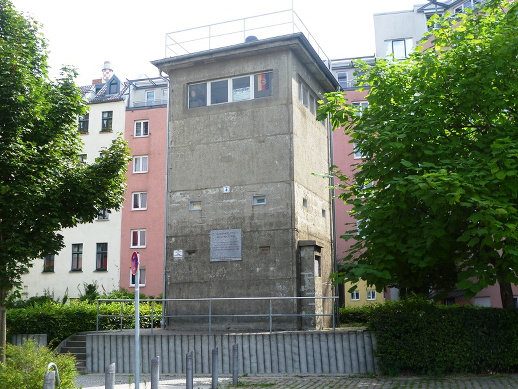By Paul Scraton
The footpath along the Spandau Ship Canal is quiet on a weekday afternoon. Apart from the odd cyclist and a couple eating their packed lunch on a bench, I have the embankment pretty much to myself. This is a relief, for I have spent the past hour walking the Mauerweg – the trail that follows the route of the Berlin Wall – from Potsdamer Platz north past the Holocaust memorials, the Reichstag and the Brandenburg Gate, and it feels as if the world is here in the city with me. But now, barely a five minute walk away from the crowds, I can once again hear my own footsteps.
The canal was built in 1848 to link the Havel and Spree rivers, and in its heyday was an extremely important transportation link, running as it does between the industrial neighbourhoods of Wedding and Moabit to Mitte in the heart of the city. Barges still make their slow progress along the canal, having this stretch of water to themselves before they reach the river and have to jostle for position with the open-top tourist boats. There is still some industry here and there on the banks, but much of this zone just north of the main train station feels somewhat abandoned; more like the edge of the city than its geographic location, right in the centre of things, would suggest.
Perhaps this is not surprising. During the years between 1961 and 1989 when the Berlin Wall stood on the eastern embankment of the canal this truly was the edge, and despite nearly twenty-five years since the fall of the Wall not all the gaps have been filled in. Of the structure itself there is not much to be found; Berliners were keen to erase as much of the border fortifications as they could in the early years of the 1990s, and it was through fears that the remnants of division could disappear completely that was one of the main motivations for creating the Berlin Wall Trail in the first place.
Thankfully attitudes have changed, and most Berliners now wish to preserve what remains – such as the famous East Side Gallery or the Memorial on Bernauer Straße – and all the while the Mauerweg itself has become something of a site of memory on a grand scale, all 160 kilometres of it. But in walking the trail it is not only the history that appeals, but also what it can tell us about contemporary Berlin. Where former border zones lie empty the gentrification debate rages in deciding what to do with it. Parks have been built on the former death strip. People use the path to commute to work, to walk their dogs or, on the edge of their city, go fishing. Near Potsdam the trail has become a symbol of access debates to the lakeshore. In the Mauerpark karaoke parties are held in what was once the preserve of border guards and their dogs. Each time I walk a section of the trail I discover something new about the city I call home, and given pause to reflect on the legacy of divided Berlin.
Today is no different. I pass through a cemetery complete with some remains of the Wall in amongst the gravestones. I find an old guard tower in the courtyard of new apartment buildings, the tower itself now a memorial to Günther Litfin, the first person shot and killed trying to cross the border. I discover the mouth of the Panke river, which runs past my house a few kilometres to the north, and peak through the fences of the enormous complex that will house the BND – the German secret service – built on what was once East Berlin’s largest sports stadium.
My walk continues, over the main road by the Bayer-Schering pharmaceutical complex and through residential streets, past yet more graveyards and along parkland footpaths that once housed railway tracks to the Baltic before they were replaced with barbed wire and floodlights. I pause now and then to make notes, to take a picture. Following a red line on my map I am gaining a greater understanding of Berlin, whether following the trail through the centre, out on the fringes where the city meets the country, or through the edgelands in between.
Paul is collecting together impressions from along the Berlin Wall Trail on his new website, Traces of a Border


